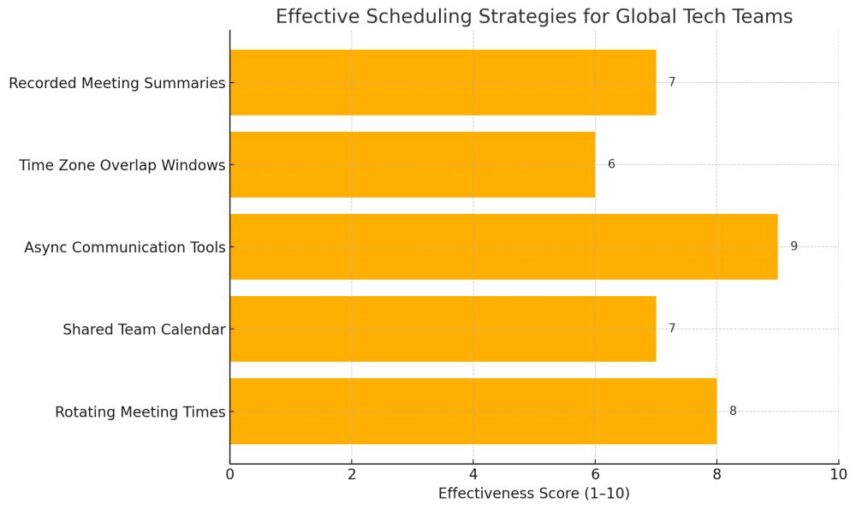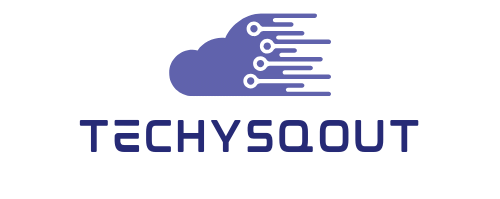How to Work With International Teams in Tech Projects
By March 2025, 22.8% of U.S. employees—around 36 million people—were working remotely at least part-time, marking a stable trend since early 2024. In tech, this trend is even stronger: 59% of professionals collaborating with international colleagues report working across borders regularly. But coordinating across time zones, cultural norms, and languages takes deliberate strategy.
Let’s explore how to make international tech collaboration truly effective.
Understanding Cultural Intelligence in Global Tech Teams

Cultural intelligence is critical in international tech projects. According to the Society for Human Resource Management (SHRM), around 70 percent of organizational change efforts fail because of communication breakdowns, often tied to cultural misunderstandings. In global teams, these breakdowns manifest as misaligned expectations, misread cues, and delays that aren’t caused by technical issues but by conflicting work norms.
For example, teams in Northern Europe may expect consensus and open debate during meetings. In contrast, team members from East Asia might prioritize hierarchy and avoid challenging superiors. Without context for these differences, even simple collaboration can become inefficient or strained.
At the start of a project, taking time to discuss how each team communicates, handles feedback, and approaches deadlines can prevent costly friction. Creating mutual understanding at this stage builds trust and ensures smoother execution throughout the project lifecycle.
Communication Across Borders: Tools and Techniques That Actually Work

International tech teams rely on clear, adaptable communication strategies to stay aligned across languages and time zones. Miscommunication is often the most common barrier to success, especially when team members interpret tone, hierarchy, or instructions differently due to cultural context.
Video conferencing helps bridge distance and supports nonverbal cues, which are often lost in text. Tools like Microsoft Teams or Zoom allow real-time updates and screen sharing. Presence indicators in chat platforms, such as Slack or Skype, help teams interact more informally and reduce delays in simple queries. Shared documents and collaborative whiteboards keep deliverables transparent and traceable across locations.
Language is another challenge. When English is not the first language of your team, clarity becomes even more critical. Use simple vocabulary and avoid idioms. When meetings involve teams in different countries, it’s helpful to provide post-meeting notes or translated summaries.
This is where professional translation and video interpretation services become essential, enabling teams to navigate live discussions in real time and ensure critical details are conveyed accurately across language barriers.
Communication in international projects is not just about the tools used but also about how well they are applied in culturally sensitive ways. Selecting tools is only the beginning. It takes awareness and discipline to ensure every voice is heard and every message is received as intended.
| Method | Best Use Case | Benefit for Global Teams |
| Video conferencing | Project kickoffs, retrospectives | Supports nonverbal communication and real-time clarity |
| Chat/messaging apps | Quick questions, team bonding | Promotes informal, quick interaction |
| Shared docs & whiteboards | Collaborative planning and specs | Maintains transparency across teams and time zones |
| Meeting recordings | Distributed teams across time zones | Offers playback for clarity and inclusion |
| Translated summaries | Recap of key meetings and decisions | Enhances understanding via translation and interpretation services |
Managing Time Zones Without Burning Out Your Team

Coordinating across global time zones is one of the most persistent challenges in international tech projects. It impacts meeting schedules, response expectations, and decision-making timelines. Without a structured plan, teams quickly face fatigue and disengagement.
Start by mapping everyone’s working hours using a shared timezone chart or integrated calendar. Tools like World Time Buddy or Google Calendar can highlight overlaps, making it easier to schedule meetings that respect availability. Don’t default to the same regions absorbing the time-zone burden, rotate early or late calls so all teams share the inconvenience fairly.
When overlapping hours are limited, lean into asynchronous tools like Jira, Trello, Loom, or Confluence. These help teams log updates, share feedback, and clarify tasks without relying on real-time coordination. Asynchronous video or voice messages are especially helpful when ideas are complex and need richer context.

Use your synchronous overlap windows wisely. Keep meetings focused and short, and share notes or recordings immediately after. This improves clarity for anyone who couldn’t attend and reinforces accountability.
Here’s a practical visual to help plan across global locations:
Global Meeting Time Overlap (Sample)
| Team Location | Working Hours (Local Time) | UTC Offset | Suggested Overlap Slot (UTC) |
| New York, USA | 09:00–17:00 | UTC−4 | 13:00–15:00 |
| London, UK | 09:00–17:00 | UTC+1 | 13:00–15:00 |
| Bangalore, India | 09:00–17:00 | UTC+5:30 | 08:30–10:30 |
| Sydney, Australia | 09:00–17:00 | UTC+10 | 23:00–01:00 (next day) |
These slots won’t fit every scenario, but reviewing overlap windows upfront lets project managers rotate meetings more fairly and preserve team energy.
Balancing time zones isn’t just a technical problem, it’s a people problem. Fair scheduling, flexible async workflows, and clear expectations are what help international teams stay productive without burning out.
Building Trust and Managing Teams Across Split Locations

Distributed tech teams often face an invisible hurdle: the lack of spontaneous collaboration that co-located teams enjoy. When team members are spread across different cities or continents, trust doesn’t form organically. It needs to be built intentionally.
Start with clarity. Define responsibilities, ownership, and escalation paths early. When everyone knows who is doing what and why, it reduces friction and builds mutual accountability. Share project roadmaps and role expectations in a transparent format.
Encourage informal interaction through short, regular check-ins. Even a weekly 10-minute sync to talk about blockers or share small wins can go a long way in building rapport. Virtual “coffee chats” or casual Friday standups help re-create the social glue that holds teams together.
Trust is also closely tied to visibility. Team members who feel “out of sight” often worry that their contributions are being overlooked. Use collaborative tools to make deliverables visible, not just to managers but to the full team. As tasks are completed, tag teammates to acknowledge their input and keep momentum going.
Here’s a table summarizing key strategies for managing split teams:
Strategies for Managing Split Teams Effectively
| Challenge | What to Do | Why It Works |
| Lack of casual interactions | Schedule informal check-ins | Builds familiarity and reduces isolation |
| Role confusion | Document responsibilities in shared dashboards | Enhances clarity and reduces duplicated effort |
| Delayed feedback or decisions | Set response time expectations for each channel | Keeps workflows moving without micromanaging |
| Recognition of remote work | Publicly highlight remote team wins | Increases morale and perceived value |
Translation and interpretation also play a role in building trust. When discussing strategy, requirements, or feedback with non-native speakers, professional services ensure that tone and intent are preserved, avoiding misunderstandings that can erode confidence.
Navigating Cultural Differences in Tech Teams

Cultural diversity in global tech teams can be a source of strength, but only if managed with intent. Differences in communication styles, decision-making processes, and conflict resolution norms can create friction if ignored.
Start by encouraging open discussions about cultural expectations. Many misunderstandings stem from assumptions. In some cultures, disagreeing openly may be seen as disrespectful, while in others, direct feedback is expected. Clarifying how your team prefers to handle feedback, meetings, and problem-solving can eliminate tension early.
Be aware of how hierarchy affects participation. For instance, team members from cultures with high power distance may hesitate to question a senior team member’s idea. Create space for input from all levels by using anonymous feedback tools or round-robin formats during discussions.
The table below summarizes cultural dimensions that commonly affect collaboration in tech environments:
Common Cultural Dimensions Affecting Collaboration
| Cultural Factor | High Context Example | Low Context Example | Project Impact |
| Feedback Style | Indirect (Japan, India) | Direct (US, Germany) | Misread tone or intent |
| Power Distance | High (China, Mexico) | Low (Sweden, Australia) | Uneven participation in decision-making |
| Time Orientation | Flexible (Brazil, Italy) | Rigid (UK, Netherlands) | Missed deadlines or differing priorities |
| Risk Tolerance | Low (Russia, Japan) | High (US, Denmark) | Reluctance to adopt new solutions |
Being culturally intelligent means adapting your leadership style without compromising the project goals. Encourage questions like “How is this usually handled in your location?” or “What would be a better way to approach this from your perspective?” These invite insight instead of resistance.
Also, don’t underestimate the role of translation and interpretation when working across languages. Even simple project terms can have very different connotations, and accurate language support helps teams avoid missteps and align faster.
Avoiding Burnout: Supporting Home and Remote Teams Equally

International tech projects often run around the clock, but your team shouldn’t have to. Burnout creeps in when schedules are overloaded, expectations are unclear, and time zones are handled without empathy.
One major risk is the uneven distribution of meeting times. If the same region is always adjusting to inconvenient hours, fatigue builds quickly. Rotate meeting slots so no one team bears the burden repeatedly. Use a shared planning sheet to log who has adjusted most recently and distribute the load fairly.
Also, set boundaries for availability. Just because a project spans time zones doesn’t mean everyone should be reachable at all hours. Define core hours where possible and use async updates for everything else. Managers must lead by example here—if leadership responds to messages at midnight, others will feel pressure to do the same.
Here’s a simple visual to illustrate how distributed availability can be managed without pushing people to the edge:
Balanced Workload Planning for Global Teams
| Time Zone | Max Meeting Window | Local Break Hours | Slack Response Expectation |
| GMT+1 (Europe) | 10:00–16:00 | 12:30–13:30 | Within 4 hours (daytime) |
| GMT+8 (Asia) | 15:00–19:00 | 12:00–13:00 | Within 4 hours (daytime) |
| GMT-5 (US East) | 08:00–13:00 | 12:00–13:00 | Within 4 hours (daytime) |
Regular feedback loops help surface early warning signs of stress. Brief pulse surveys, anonymous forms, or even casual check-ins reveal where pressure is mounting. Adjust workloads accordingly and don’t reward overwork.
Fairness in expectations—no matter where someone is located—is essential to keeping teams resilient, focused, and productive over the long term.
Conclusion
Managing international teams in tech requires more than just coordinating across time zones. It demands cultural awareness, thoughtful communication, and balanced leadership. When you plan with intention and treat all team members fairly, no matter their location, you create a foundation for strong collaboration and better outcomes. The most successful global tech projects are led by people who prioritize clarity, empathy, and consistency.






